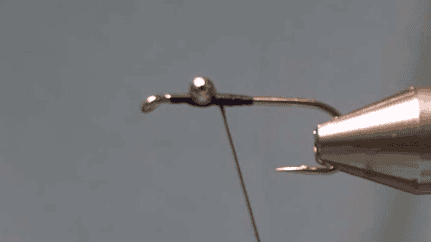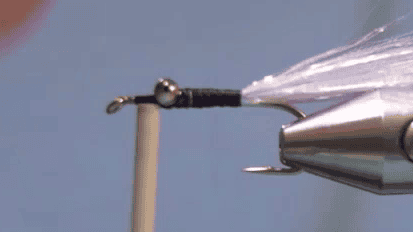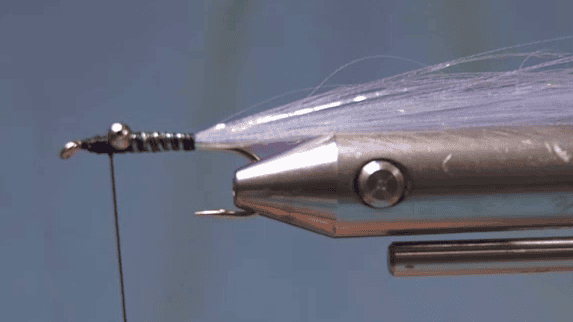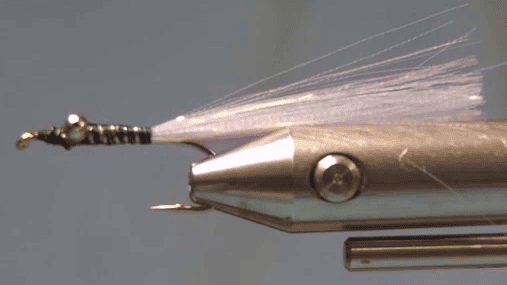Pondage Fly Variants
The Pondage Fly variants are a series of simple yet remarkably effective trout flies originally tied by Victorian angler Rod Groaters for use in the Eildon Pondage on the Goulburn River. Featured in Australian Fly Patterns by Peter Coulson, these patterns embody the minimalist philosophy of Australian stillwater fly design — using only a few materials, primarily Crystal Flash, to create subtle, lifelike movement that entices trout in clear or fluctuating pondage waters. Their elegance lies in their simplicity, proving that even the most understated flies can deliver impressive results when perfectly tuned to local conditions.
Philosophy Behind the Flies
What sets the Pondage Fly variants apart? Here are the key hallmarks:
- Simplicity: Rather than complicated hackles, tubes or heavy bodies, these patterns rely on just a few materials — and most prominently, strands of Crystal Flash or equivalent shimmering fibre.
- Minimalism with Purpose: In pressured waters like Eildon Pondage, trout often key on subtle movement, flash and contrast more than bulk or heavy profile. A slim hook, a few flashes of colour, a clean silhouette.
- Adapted to still-storage / regulated release conditions: The Pondage fluctuates in depth and clarity (due to its function regulating flows from the dam) so flies that fish can pick out, even in subdued light or changing water levels, matter.
- Signature tie by Groaters: While many tiers adapt or riff on the idea, the origin lies with Rod Groaters’ tying bench — his variations built around this simple “flash plus minimal body” concept.
Why These Flies Matter
The Pondage Fly variants embody a few key lessons for the modern fly-tier and angler:
- They emphasise adaptation to local water: Groaters didn’t reinvent an entire pattern library — he took what worked and pared it down for his water.
- They show that less can be more: In lakes or regulated storages where fish see a lot of gear, slim profiles with flash often outperform heavy, obvious flies.
- They remind us that flash still works: Even in still or slow-moving water, a little shimmer draws strikes.
- They fit into the documented tradition of Australian pattern-collecting: As the book Australian Fly Patterns notes, many successful Australian flies started as angler variations built for local conditions.
Materials
- Hook:2x size 10.
- Thread:Black woolly nylon.
- Body:Black thread
- Tail:Crystal flash
- Eyes:Silver bead chain.
- Body:Crystal flash





Tying Notes
Here’s the proto-version of a Pondage Fly variant (derived from the description of Groaters’ approach) — use it as a base and feel free to adapt colours/sizes as conditions dictate.
- Hook: Standard size 12–16 nymph/soft-hackle or light streamer hook (depending on whether you’re fishing deeper or shallow flats).
- Thread: Fine (e.g., 8/0 or 70 denier) in a neutral or matching shade (olive, brown, black).
- Tail (optional): A few strands of fine flash fibre (Crystal Flash, Flashabou) in silver, gold or pearl.
- Body: Very slim—either sparse dubbing or a small tube of colour, or even just thread body. The idea is not to bulk it up.
- Flash-rib / accent: A larger section of Crystal Flash wound sparsely around the body (or pulled through the body) to provide shimmer.
- Hackle / collar (optional): A soft hackle or micro-fibre collar in matching or contrasting shade. The idea is subtle movement more than big vibration.
- Finish: Minimal head, whip-finished, clear varnish or thin UV resin if you like.
Tying Instructions

- Start your thread and cover the rear half of the hook shank.
- Secure the dumbbell or bead-chain eyes about two eye-lengths back from the hook eye.
- Tie in a small bunch of Crystal Flash at the rear of the hook, extending to the midpoint of the shank.
- Return the thread to the eyes.


- Take a single strand of Crystal Flash and rib it forward to form the body.
- Tie off and whip finish, or half hitch, behind the eyes.
- Apply a fine coat of UV resin over the body and cure.
- Trim the tail to about two body lengths.
